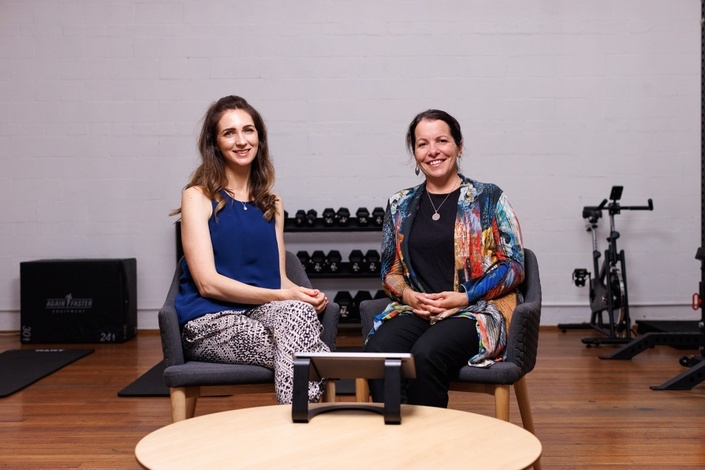Introduction
The Shoulder Instability Masterclass, taught by Associate Professor Tania Pizzari and Dr Sarah Warby, provides a succinct yet clinically invaluable summary of shoulder instability, including practical ways to assess and manage the condition. This position statement provides clinically relevant, actionable information that may be useful to health professionals.
Part 1: Aetiology of Shoulder Instability
Shoulder instability is ultimately the inability for the humeral head to be centred in the glenoid. Whilst subluxations and dislocations are much easier to spot, translational instability (subtle movements of the humeral head within the glenoid) are commonly missed by clinicians and misdiagnosed as other shoulder conditions.
- Whilst there is usually a higher clinical suspicion for anterior shoulder instability, posterior and multidirectional instability are commonly overlooked as the individual is less likely to seek medical assistance, they are more common in translational instability and there is a lack of universally accepted criteria for diagnosis.
- The Watson Instability Program (WIP) Classification divides shoulder instability into a) micro-traumatic (overuse, possible structural changes, and possible indications for surgery), b) atraumatic (non-structural changes, multidirectional instability, rehab alone is indicated) and c) macro-traumatic (structural, traumatic onset with surgery usually indicated).
-
t’s important to educate our patients that rehabilitation of atraumatic and micro-traumatic instability is likely to take up to 6 months of progressive exercise.
Part 2: Assessment
Each direction of shoulder instability will generally have a pattern of behaviour. Anterior instability generally dislikes overhead movements in external rotation such as throwing and swimming, and pain will be anterior. Posterior instability dislikes loading in flexion, internal rotation, or horizontal flexion, such as taking a top off or push ups, with a sense of tightness felt posteriorly. Inferior instability will dislike carrying heavy objects and may have concurrent neurological or cervical issues. These patterns underpin our subjective and objective assessment to correctly diagnose and manage the individual’s shoulder instability.
- The subjective assessment should focus on looking for changes in loading, establishing their past activity history, concurrent issues such as hypermobility, neurological issues, or cervical issues, whilst identifying aggravating factors which are consistent with a direction(s) of Instability.
- Passive instability tests such as the apprehension test provide limited clinical value as they are likely to be provocative and usually do not provide any additional information about the person’s shoulder pain.
-
The primary aim during objective testing is to firstly see if the individual can centralise their humeral head during active movements, and if not, if their symptoms can be modified through correction of the scapula or humeral head.
Masterclass Preview
Watch our free preview of Tania and Sarah discussing and demonstrating their approach to shoulder instability rehab in the early - mid stages of rehabilitation.
Part 3: Rehab Programs
There is a lack of evidence-based rehabilitation programs to treat shoulder instability. The Watson Instability Program (WIP) is a graduated exercise program which transitions from motor control of the scapular and humeral head to the inclusion of harder exercises in more unstable positions. The WIP takes advantage of the scapular or humeral head correction which improved the individual’s symptoms and applies it to rehabilitation.
- The WIP has demonstrated a statistically and clinically significant improvement in shoulder function, pain and stability after 12 weeks, and also outperformed the Rockwood program (rotator cuff/deltoid program) in a randomised control trial.
- Most people will find that upward rotation improves their symptoms, and so a shrug will form the basis for ‘Phase 1: Scapular Phase’, whilst ensuring humeral head and scapular control is sufficient.
- The subsequent phases will gradually load the cuff (provided they continue to stabilise their humeral head and scapula), and the deltoid, moving from 0 degrees abduction to overhead eventually, and then into sports-specific movements.
Part 4: Rehabilitation
Rehabilitation of shoulder instability can be complex, highlighting the need for sound clinical reasoning and an individualised approach. For those in persistent pain, there may be changes to the nervous system of which graded motor imagery (consisting of a) left/right discrimination, b) imagined movements and c) mirror therapy) may be useful, whilst more athletic individuals may require strength testing or assessment of the kinetic chain given the large amount of force generated by the rest of the body when throwing.
- Upward rotation of the scapula is key to improve the length-tension relationship, distribute force more evenly and reduce shear force.
- It is crucial to ensure that the individual can control their humeral head and scapula during movements to avoid overloading the rotator cuff.
- For young people with shoulder pain and no significant trauma, assume it is shoulder instability until proven otherwise.


